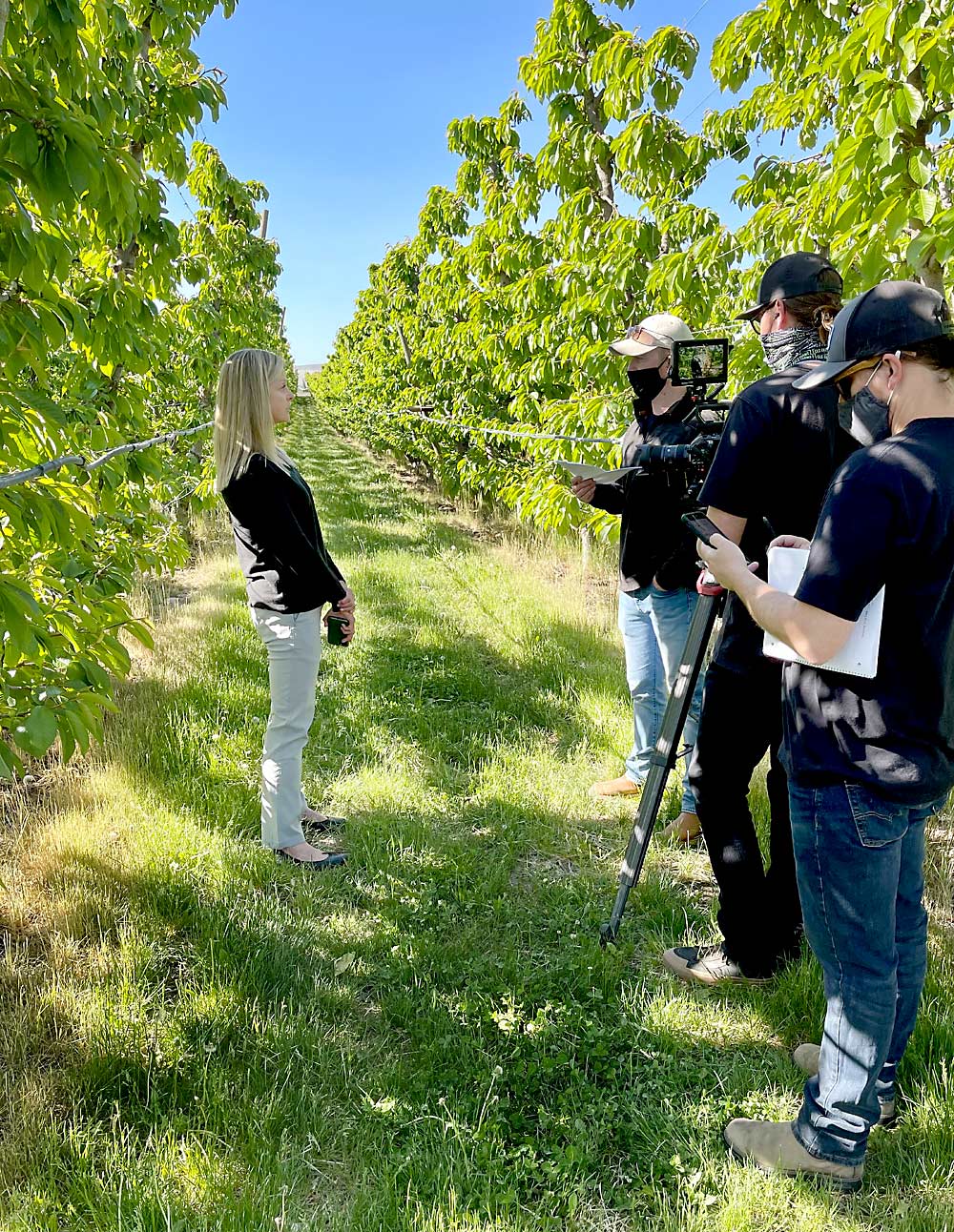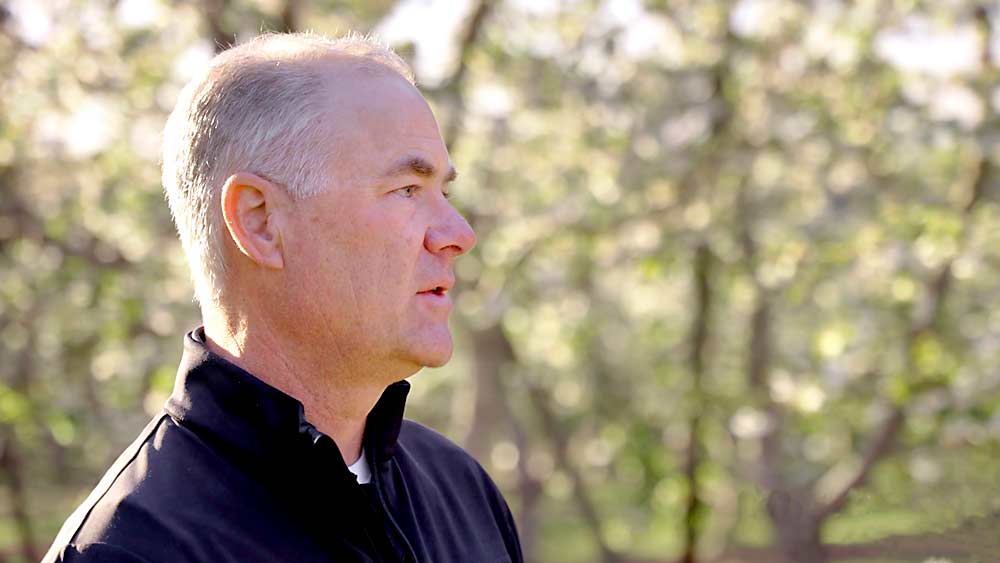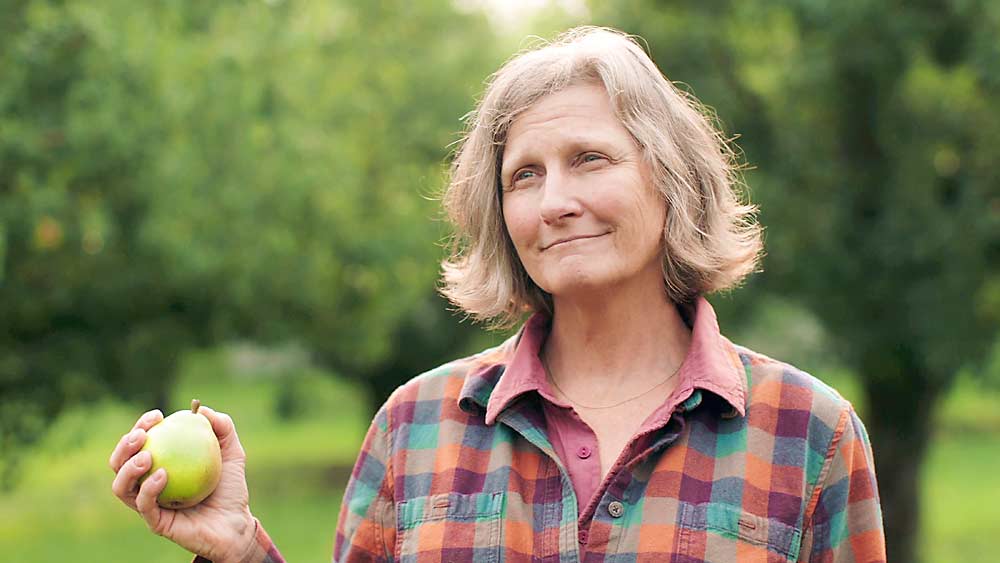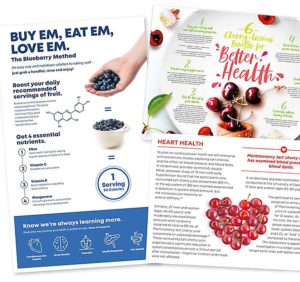
Fresh cherries don’t just happen.
They take nutrients, careful pruning, hand labor and logistics that would make UPS jealous.
Cherry growers, of course, know this, but an industry group is putting together a promotional video to explain the nuances of cherry production to nutritionists and consumers shopping for their Fourth of July barbecues.
“Having them understand that it’s a lot of work and it doesn’t just happen magically,” said Peter Verbrugge, general manager of Pacific Coast Cherry Packers in Wapato, Washington, and one of six growers interviewed in the video.
Northwest Cherry Growers has used some of its health messaging campaign funds to produce a 30-minute video that explains the intricacies of cherry growing and how growers’ decisions affect the size, quality and healthfulness of the summer fruit. The film crew also interviewed nutrition experts and recorded scenes from inside the Texas A&M laboratory where researchers are studying the benefits of dark sweet cherries on gut health and breast cancer prevention.
More documentary than traditional promotion, it’s an approach that’s grown more common in recent years as grower groups try to tell their story and connect to consumers increasingly disconnected from the reality of agriculture. A recent video series from USA Pears similarly dives into how harvest timing and other farming choices result in more flavorful fruit.
The target audience for the full-length cherry feature is the annual meeting of the American Society for Nutrition, in June, said James Michael, vice president of North American marketing for Northwest Cherry Growers, a Yakima, Washington-based organization that collectively promotes sweet cherries from five Northwest states. Verbrugge is a board member.
In 2020, Northwest Cherry Growers had been planning to attend the conference with fresh samples to pass out, but the pandemic forced the show to go virtual, which boosted attendance from about 3,000 people to 28,000. This year, organizers plan to host the event virtually again and gave the cherry organization a chance to participate with a spotlight video, Michael said.
However, once it has premiered at the conference, Michael intends to break it into smaller bits for other audiences, such as online consumers, dietitians who work with retailers and larger marketing campaigns.

Videos commissioned by industry groups are indeed promotional, but they also carry a consumer education tone, helping farmers communicate their challenges to urban customers who may not otherwise understand.
“We’re trying to get the flavor message across, so you know what we do to give you a quality piece of fruit,” said Kevin Moffitt, president and CEO of Pear Bureau Northwest, a Milwaukie, Oregon, organization that collectively promotes fresh pears from Oregon and Washington under a federal marketing order and with the USA Pears label.
The pear bureau has produced “Meet Our Grower” videos for three or four years now and in 2018 made a five-minute film called “Hand Picked.” The group intends to extend and translate it into several different languages this year with funding from an Oregon state block grant.
A 2020 film series, also paid for in part with an Oregon block grant, dives a bit deeper, covering flavor profiles, soil health, harvest timing and other topics, Moffitt said. The pear bureau uses the video in social media campaigns and has plans to use it with QR codes at stores, though that may have to wait until next year, Moffitt said. Like the cherry video, the pear bureau will be able to cut its recording into smaller sections for different audiences.

Data from surveys and social media tell marketing groups that modern shoppers crave information like this, Moffitt said. The grower videos attract a lot of clicks.
“People definitely are interested,” he said.
Decades ago, this wouldn’t have been necessary, because Americans were more familiar with food production, said Jon DeVaney, president of the Washington State Tree Fruit Association, which represents growers with statistics, educational programs and state lobbying. But fewer people farm now. Thus, his group and others frequently implore growers to tell their story.
Meanwhile, current public opinion hinges more on who says something rather than what they are saying, DeVaney said. Shoppers and policymakers typically have more public sympathy for small family farmers than corporations and lobbyists, even when the corporations and lobbyists communicate accurate and truthful facts.
“They have to like the person,” DeVaney said.
To view the videos, visit the marketing organizations’ websites at nwcherries.com and usapears.org.
—by Ross Courtney







Leave A Comment